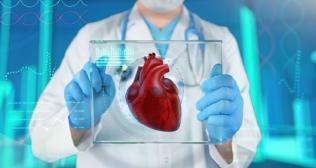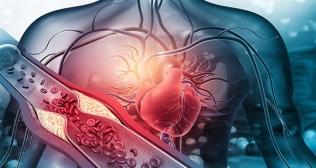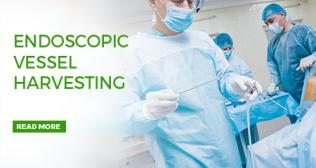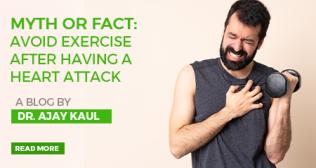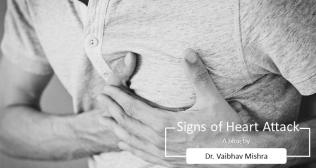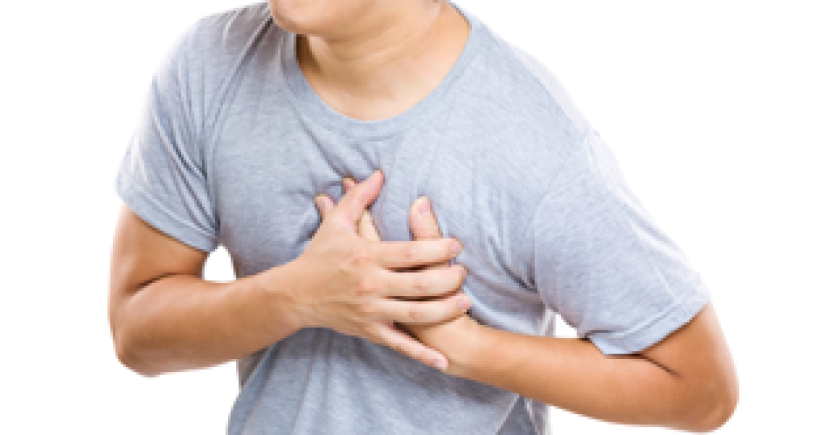
Cardiac Sciences
First-Aid In Heart Attack
First-Aid In Heart Attack Sep 08, 2014
 Heart attack can be fatal. Prompt recognition and diagnosis of a heart attack is the key and a patient should be rushed to the nearest hospital without any delay
Heart attack is the most catastrophic presentation of a heart disease. If not treated effectively it has a mortality of up to 25 per cent. A heart attack happens when blood supply to this vital organ gets blocked. It can be a silent disease and can cause a sudden death with advancing age in both men and women. The commonest cause is a sudden and complete blockage of a coronary artery by a freshly formed blood clot. The area of the heart supplied by this artery immediately gets affected and if blood supply remains cut off, it gets completely damaged (necrosed). The outcome of such a patient depends upon the size of the attack. If more than 50 per cent muscle is affected, the mortality can go up to 80 per cent, if not treated promptly.
Today effective treatment options for heart attack are available that can save lives and prevent sudden death. Its treatment is most effective when started within one hour of the beginning of heart attack symptoms. If a patient gets help during that first hour, then chances of recovery increase. Many people hesitate to help heart patients due to lack of knowledge and correct information. It is very important to know the symptoms that may indicate heart attack and the emergency first-aid treatment.
Symptoms of Heart Attack
Chest pain with shortness of breath: Uncomfortable pressure, fullness, squeezing or pain in the centre of the chest lasting for more than a few minutes.
Pain in shoulder/arm: Pain spreading to the shoulders, neck or arms. Pain may be mild to intense. It may feel like pressure, tightness, burning or heavy weight.
Other symptoms: May include anxiety, nervousness, cold, sweaty skin, increased or irregular heart rate. Profuse sweating is a common accompaniment.
The patient may suddenly become breathless with severe air hunger and gasp for breath in a massive heart attack leading to heart failure. In some situations patients may lose consciousness and have what appears like a convulsion. This is related to either a very fast and chaotic heart beat or stoppage of the heart beat called a cardiac arrest.
Diagnosis
The actual diagnosis of a heart attack is always made by a doctor. The diagnostic test is an Electrocardiogram, which must be done as soon as possible and is a must before specific treatment can be started. There are situations though not very common in a full fledged attack in which ECG may not be diagnostic. Certain specific blood tests such as troponin and MB CPK estimation are diagnostic in these situations.
A situation in which ECG may not provide correct diagnosis is in patients with history of previous heart attacks and patients on permanent pacemakers. Certain blood tests may help in proper diagnosis in such situations.
First-aid in heart attack
Time is the most important factor to save the heart muscle from getting permanently damaged with bad short-term and long-term prognosis. The first hour after heart attack is also called the ‘Golden Hour’ because effective treatment instituted within one hour to open the blocked artery can lead to complete reversal of the damage suffered. Delay in treatment leads to irreversible damage to the heart. Treatment started more than 12 hours after suffering a heart attack is of very little use in most instances.
The best place to manage a patient with a heart attack is a hospital with the facility of ECG monitoring and providing critical care. Coronary Care Units (CCU) are specialised areas where equipment and medical personnel to manage these sick patients is kept at one place. Early detection and prompt treatment is the goal of keeping these patients in this area, which reduces the mortality of a heart attack from approximately 20 to 35 per cent. This is achieved by restoring the blood flow in the blocked coronary artery either by using drugs ‘clot busters’, or by performing an emergency angioplasty and stenting.
Measures to be taken before patient is shifted to a hospital
1. Make the person sit down and calm. Loosen his/her clothing.
2. Transport the patient to the nearest hospital or ambulance service immediately. Do not leave the person alone.
3. Nothing should be given except for sublingual (under the tongue) or any other medication prescribed by the doctor. A tablet of aspirin helps to limit the damage. Around 300 mgs of aspirin chewed at the time of heart attack can reduce the mortality by 15 to 20 per cent.
4. Make sure the patient continues breathing and has a pulse until the ambulance arrives or the patient reaches the emergency department of a hospital.
5. If there is no breathing or pulse, give Cardiopulmonary resuscitation (CPR). Immediately place the palm of your hand on the patient’s chest just over the lower part of the sternum (breast bone) and press your hand in a pumping motion once or twice by using the other hand. This may make the heart beat again.
Heart attack can be fatal. Prompt recognition and diagnosis of a heart attack is the key and a patient should be rushed to the nearest hospital without any delay
Heart attack is the most catastrophic presentation of a heart disease. If not treated effectively it has a mortality of up to 25 per cent. A heart attack happens when blood supply to this vital organ gets blocked. It can be a silent disease and can cause a sudden death with advancing age in both men and women. The commonest cause is a sudden and complete blockage of a coronary artery by a freshly formed blood clot. The area of the heart supplied by this artery immediately gets affected and if blood supply remains cut off, it gets completely damaged (necrosed). The outcome of such a patient depends upon the size of the attack. If more than 50 per cent muscle is affected, the mortality can go up to 80 per cent, if not treated promptly.
Today effective treatment options for heart attack are available that can save lives and prevent sudden death. Its treatment is most effective when started within one hour of the beginning of heart attack symptoms. If a patient gets help during that first hour, then chances of recovery increase. Many people hesitate to help heart patients due to lack of knowledge and correct information. It is very important to know the symptoms that may indicate heart attack and the emergency first-aid treatment.
Symptoms of Heart Attack
Chest pain with shortness of breath: Uncomfortable pressure, fullness, squeezing or pain in the centre of the chest lasting for more than a few minutes.
Pain in shoulder/arm: Pain spreading to the shoulders, neck or arms. Pain may be mild to intense. It may feel like pressure, tightness, burning or heavy weight.
Other symptoms: May include anxiety, nervousness, cold, sweaty skin, increased or irregular heart rate. Profuse sweating is a common accompaniment.
The patient may suddenly become breathless with severe air hunger and gasp for breath in a massive heart attack leading to heart failure. In some situations patients may lose consciousness and have what appears like a convulsion. This is related to either a very fast and chaotic heart beat or stoppage of the heart beat called a cardiac arrest.
Diagnosis
The actual diagnosis of a heart attack is always made by a doctor. The diagnostic test is an Electrocardiogram, which must be done as soon as possible and is a must before specific treatment can be started. There are situations though not very common in a full fledged attack in which ECG may not be diagnostic. Certain specific blood tests such as troponin and MB CPK estimation are diagnostic in these situations.
A situation in which ECG may not provide correct diagnosis is in patients with history of previous heart attacks and patients on permanent pacemakers. Certain blood tests may help in proper diagnosis in such situations.
First-aid in heart attack
Time is the most important factor to save the heart muscle from getting permanently damaged with bad short-term and long-term prognosis. The first hour after heart attack is also called the ‘Golden Hour’ because effective treatment instituted within one hour to open the blocked artery can lead to complete reversal of the damage suffered. Delay in treatment leads to irreversible damage to the heart. Treatment started more than 12 hours after suffering a heart attack is of very little use in most instances.
The best place to manage a patient with a heart attack is a hospital with the facility of ECG monitoring and providing critical care. Coronary Care Units (CCU) are specialised areas where equipment and medical personnel to manage these sick patients is kept at one place. Early detection and prompt treatment is the goal of keeping these patients in this area, which reduces the mortality of a heart attack from approximately 20 to 35 per cent. This is achieved by restoring the blood flow in the blocked coronary artery either by using drugs ‘clot busters’, or by performing an emergency angioplasty and stenting.
Measures to be taken before patient is shifted to a hospital
1. Make the person sit down and calm. Loosen his/her clothing.
2. Transport the patient to the nearest hospital or ambulance service immediately. Do not leave the person alone.
3. Nothing should be given except for sublingual (under the tongue) or any other medication prescribed by the doctor. A tablet of aspirin helps to limit the damage. Around 300 mgs of aspirin chewed at the time of heart attack can reduce the mortality by 15 to 20 per cent.
4. Make sure the patient continues breathing and has a pulse until the ambulance arrives or the patient reaches the emergency department of a hospital.
5. If there is no breathing or pulse, give Cardiopulmonary resuscitation (CPR). Immediately place the palm of your hand on the patient’s chest just over the lower part of the sternum (breast bone) and press your hand in a pumping motion once or twice by using the other hand. This may make the heart beat again. 








